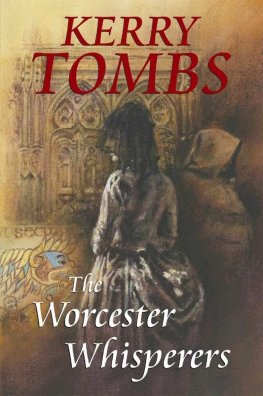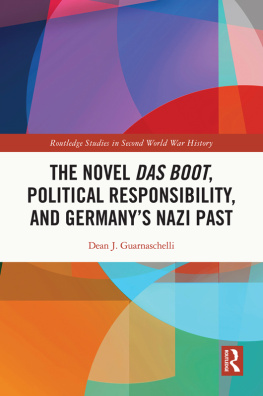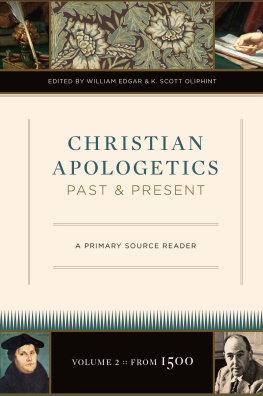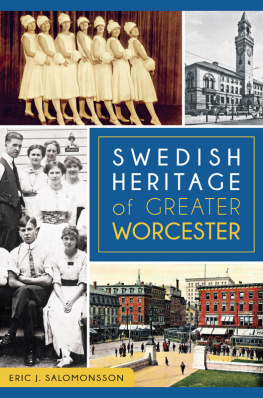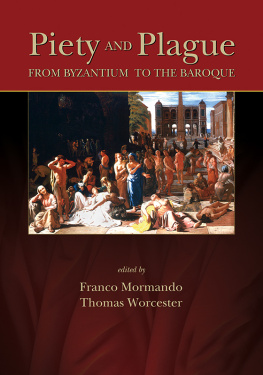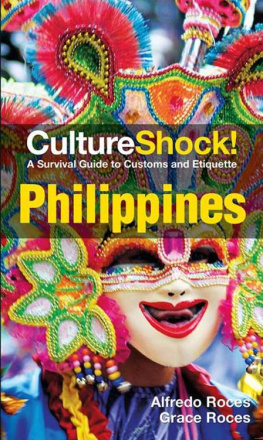Dean C. Worcester - The Philippines: Past and Present (Volume 1 of 2)
Here you can read online Dean C. Worcester - The Philippines: Past and Present (Volume 1 of 2) full text of the book (entire story) in english for free. Download pdf and epub, get meaning, cover and reviews about this ebook. year: 1914, genre: Science. Description of the work, (preface) as well as reviews are available. Best literature library LitArk.com created for fans of good reading and offers a wide selection of genres:
Romance novel
Science fiction
Adventure
Detective
Science
History
Home and family
Prose
Art
Politics
Computer
Non-fiction
Religion
Business
Children
Humor
Choose a favorite category and find really read worthwhile books. Enjoy immersion in the world of imagination, feel the emotions of the characters or learn something new for yourself, make an fascinating discovery.
- Book:The Philippines: Past and Present (Volume 1 of 2)
- Author:
- Genre:
- Year:1914
- Rating:5 / 5
- Favourites:Add to favourites
- Your mark:
- 100
- 1
- 2
- 3
- 4
- 5
The Philippines: Past and Present (Volume 1 of 2): summary, description and annotation
We offer to read an annotation, description, summary or preface (depends on what the author of the book "The Philippines: Past and Present (Volume 1 of 2)" wrote himself). If you haven't found the necessary information about the book — write in the comments, we will try to find it.
The Philippines: Past and Present (Volume 1 of 2) — read online for free the complete book (whole text) full work
Below is the text of the book, divided by pages. System saving the place of the last page read, allows you to conveniently read the book "The Philippines: Past and Present (Volume 1 of 2)" online for free, without having to search again every time where you left off. Put a bookmark, and you can go to the page where you finished reading at any time.
Font size:
Interval:
Bookmark:
The Project Gutenberg EBook of The Philippines: Past and Present (vol. 1of 2), by Dean C. Worcester
This eBook is for the use of anyone anywhere at no cost and withalmost no restrictions whatsoever. You may copy it, give it away orre-use it under the terms of the Project Gutenberg License includedwith this eBook or online at www.gutenberg.net
Title: The Philippines: Past and Present (vol. 1 of 2)
Author: Dean C. Worcester
Release Date: April 19, 2004 [EBook #12077]
Language: English
*** START OF THIS PROJECT GUTENBERG EBOOK THE PHILIPPINES, V1 ***
Produced by Jeroen Hellingman and the Distributed Proofreaders Team
Peace and Prosperity.
This chance photograph showing General Emilio Aguinaldo as he isto-day, standing with Director of Education Frank L. Crone, beside afield of corn raised by Emilio Aguinaldo, Jr., in a school contest,typifies the peace, prosperity, and enlightenment which have beenbrought about in the Philippine Islands under American rule.
The Philippines Past and Present
By
Dean C. Worcester
Secretary of the Interior of the Philippine Islands 1901-1913; Memberof the Philippine Commission, 1900-1913
Author of "The Philippine Islands and Their People"
In Two Volumes With 128 PlatesVolume I1914
Contents
List of Illustrations
Peace and Prosperity
Fort San Antonio Abad, showing the Effect of the Fire from Dewey's
Fleet
Felipe Buencamino
The San Juan Bridge
Insurgent Prisoners
Typical Insurgent Trenches
Inside View of Insurgent Trenches at the Bagbag River
General Henry W. Lawton
Feeding Filipino Refugees
The First Philippine Commission
The Second Philippine Commission
The Return of Mr. Taft
Governor-general James F. Smith with a Bontoc Igorot Escort
Governor-general Forbes in the Wild Man's Country
The Philippine Supreme Court
An Unsanitary Well
A Flowing Artesian Well
An Unimproved Street in the Filipino Quarter of Manila
An Improved Street in the Filipino Quarter of Manila
Disinfecting by the Acre
An Old-style Provincial Jail
Retreat at Bilibid Prison, Manila
Bilibid Prison Hospital
Modern Contagious Disease Ward, San Lazaro Hospital
Filipina Trained Nurses
Staff of the Bontoc Hospital
A Victim of Yaws before and after Treatment with Salvarsan
The Culion Leper Colony
Building the Benguet Road
Freight Autos on the Benguet Road
The Famous Zig-zag on the Benguet Road
A Typical Baguio Road
One of the First Benguet Government Cottages
Typical Cottages at Baguio
A Baguio Home
The Baguio Hospital
Government Centre at Baguio
A Scene in the Baguio Teachers' Camp
The Baguio Country Club
The Bureau of Science Building, Manila
The Philippine General Hospital
The College of Medicine and Surgery, Manila
An Old-style Schoolhouse, with Teachers and Pupils
A Modern Primary School Building
Old-style Central School Building
Modern Central School Building
Typical Scene in a Trade School
An Embroidery Class
Philippine Embroidery
Filipino Trained Nurses
A School Athletic Team
Filipina Girls playing Basket-ball
University Hall, Manila
Bakdan
In Hostile Country
Travel under Difficulties
Dangerous Navigation
A Negrito Family and their "House"
A Typical Negrito
Typical Kalingas
Settling a Head-hunting Feud
Entertaining the Kalingas
An Ifugao Family
Ifugao Dancers
An Ifugao Dancer
Ifugao Rice Terraces
View Point and Subject-Matter
It is customary in Latin countries for a would-be author or orator toendeavour, at the beginning of his book or his speech, to establishhis status. Possibly I have become partially Latinized as the resultof some eighteen years of residence in the Philippines. At all eventsit is my purpose to state at the outset facts which will tend tomake clear my view point and at the same time briefly to outline thesubject-matter which I hereinafter discuss.
As a boy I went through several of the successive stages of collector'sfever from which the young commonly suffer. First it was postagestamps; then birds' nests, obtained during the winter season when nolonger of use to their builders. Later I was allowed to collect eggs,and finally the birds themselves. At one time my great ambition was tobecome a taxidermist. My family did not actively oppose this desirebut suggested that a few preliminary years in school and collegemight prove useful.
I eventually lost my ambition to be a taxidermist but did not lose myinterest in zology and botany. While a student at the University ofMichigan I specialized in these subjects. I was fortunate in havingas one of my instructors Professor Joseph B. Steere, then at thehead of the Department of Zology. Professor Steere, who had been agreat traveller, at times entertained his classes with wonderfullyinteresting tales of adventure on the Amazon and in the Andes, Peru,Formosa, the Philippines and the Dutch Moluccas. My ambition wasfired by his stories and when in the spring of 1886 he announced hisintention of returning to the Philippines the following year to takeup and prosecute anew zological work which he had begun there in1874, offering to take with him a limited number of his students whowere to have the benefit of his knowledge of Spanish and of his wideexperience as a traveller and collector, and were in turn to allow himto work up their collections after their return to the United States,I made up my mind to go.
I was then endeavouring to get through the University on an allowanceof $375 per year and was in consequence not overburdened with surplusfunds. I however managed to get my life insured for $1500 and toborrow $1200 on the policy, and with this rather limited sum uponwhich to draw purchased an outfit for a year's collecting and sailedwith Doctor Steere for Manila. Two other young Americans accompaniedhim. One of these, Doctor Frank S. Bourns, was like myself afterwardsdestined to play a part in Philippine affairs which was not thendreamed of by either of us.
We spent approximately a year in the islands. Unfortunately we hadneglected to provide ourselves with proper official credentials andas a result we had some embarrassing experiences. We were arrested bysuspicious Spanish officials shortly after our arrival and were triedon trumped-up charges. On several subsequent occasions we narrowlyescaped arrest and imprisonment.
The unfriendly attitude of certain of our Spanish acquaintanceswas hardly to be wondered at. They could not believe that sensible,civilized human beings would shoot tiny birds, pay for eggs the sizeof the tip of one's little finger more than hens' eggs were worth,undergo not a few hardships and run many risks while living in thesimplest of native houses on very inadequate food, unless actuated bysome hidden purpose. At different times they suspected us of lookingfor gold deposits, of designing to stir up trouble among the natives,or of being political spies.
When Doctor Bourns came back with the American troops in 1908 andI returned as a member of the first Philippine Commission in 1909,this last supposition became a fixed belief with many of our formerSpanish acquaintances who still remained in the islands, and theyfrankly expressed their regret that they had not shot us while theyhad the chance.
Next pageFont size:
Interval:
Bookmark:
Similar books «The Philippines: Past and Present (Volume 1 of 2)»
Look at similar books to The Philippines: Past and Present (Volume 1 of 2). We have selected literature similar in name and meaning in the hope of providing readers with more options to find new, interesting, not yet read works.
Discussion, reviews of the book The Philippines: Past and Present (Volume 1 of 2) and just readers' own opinions. Leave your comments, write what you think about the work, its meaning or the main characters. Specify what exactly you liked and what you didn't like, and why you think so.


